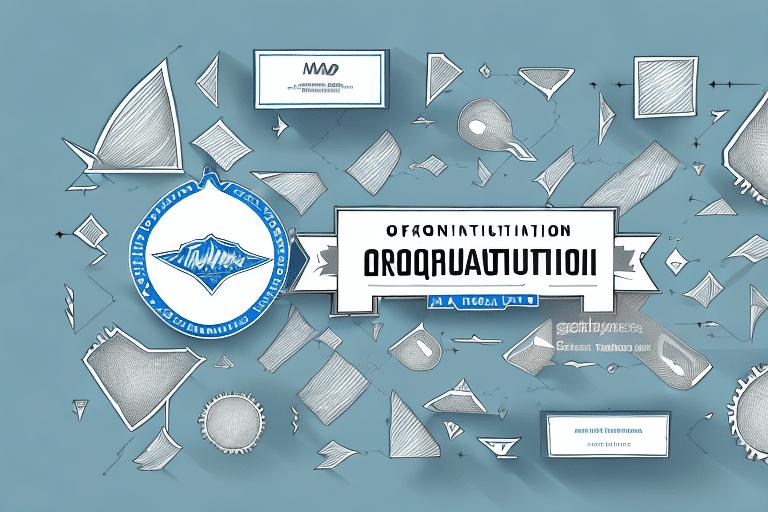How to Optimize Your Distribution Center for Maximum Efficiency
In today's highly competitive business environment, optimizing your distribution center operations is crucial. A distribution center, also known as a warehouse or fulfillment center, is a pivotal component of any supply chain management process. It manages, stores, and distributes goods to customers, wholesalers, and retailers. Effective optimization can lead to enhanced efficiency, productivity, and customer satisfaction while reducing costs and waste. This article explores various strategies and techniques to help you optimize your distribution center for maximum efficiency.
1. Importance of Optimizing Your Distribution Center
Optimizing your distribution center significantly impacts your business's success by improving operational efficiency, reducing operating costs, and enhancing market competitiveness. A well-optimized distribution center ensures that customer demands are met promptly and accurately, fostering customer satisfaction and loyalty. Additionally, effective optimization leads to better inventory management, minimizing stockouts and overstocks while maximizing inventory value.
Benefits of Optimization
- Increased Efficiency: Streamlined operations reduce processing times and enhance productivity.
- Cost Reduction: Minimizing waste and optimizing resources lead to lower operational costs.
- Enhanced Customer Satisfaction: Faster and more accurate order fulfillment boosts customer trust and retention.
- Improved Inventory Management: Accurate tracking and management reduce excess inventory and stock discrepancies.
2. Evaluating Current Operations
Before embarking on optimization, it's essential to assess your current distribution center operations to identify areas needing improvement. This evaluation should cover:
- Inventory management practices
- Order fulfillment processes
- Space utilization
- Employee productivity
- Technology and software systems
Outdated or inefficient systems can lead to errors, delays, and increased costs. Assessing your current technology, such as warehouse management systems (WMS), is crucial. Upgrading to advanced systems can enhance accuracy, speed, and overall efficiency. For more information on selecting a WMS, refer to Investopedia's guide on Warehouse Management Systems.
3. Leveraging Automation and Technology
Automation and advanced technologies are game-changers in distribution center optimization. Implementing automation can reduce manual labor, increase efficiency, and improve accuracy. Key technologies include:
Advanced Inventory Management Systems
Modern WMS solutions provide real-time visibility into inventory levels, order statuses, and warehouse operations, enabling better decision-making and reducing errors.
Barcoding and RFID Technology
These technologies enhance inventory tracking and accuracy, minimizing the chances of stockouts and overstocks.
Robotics and Automated Conveyors
Robotic systems and automated conveyors streamline the movement of goods, reducing handling times and improving operational flow.
Data Analytics and AI
Utilizing data analytics and artificial intelligence helps in predicting demand, optimizing inventory levels, and identifying inefficiencies within the warehouse operations.
According to a McKinsey report, automation can increase productivity by up to 30% in warehousing operations.
4. Implementing Lean and Sustainable Practices
Adopting lean principles and sustainable practices can significantly enhance efficiency and reduce costs in your distribution center.
Lean Principles
Lean methodologies focus on eliminating waste and optimizing processes. Key aspects include:
- Continuous Improvement: Regularly analyzing and improving workflows.
- Value Stream Mapping: Identifying and eliminating non-value-adding activities.
- Just-In-Time (JIT) Inventory: Reducing inventory levels to minimize storage costs and prevent overstocking.
Sustainable Practices
Implementing environmentally sustainable practices not only reduces waste but also lowers operational costs. Practices include:
- Recycling and reusing materials
- Reducing packaging waste
- Utilizing energy-efficient equipment
- Optimizing transportation methods to reduce carbon footprint
Research from the OnSustain report highlights that sustainable practices can reduce operational costs by up to 20%.
5. Maximizing Space and Improving Inventory Management
Effective space utilization and robust inventory management are critical for distribution center optimization.
Space Utilization
Smart design choices can maximize storage space and improve productivity. Consider the following:
- Vertical Space: Utilize vertical storage solutions to increase storage capacity.
- High-Density Storage Systems: Implement systems like pallet racking and shelving to optimize space.
- Conveyor Systems: Automated conveyors reduce handling times and improve flow.
Inventory Management
Effective inventory management ensures that stock levels meet customer demands without excess. Strategies include:
- Implementing Automated Inventory Management Systems for real-time tracking
- Adopting Just-In-Time (JIT) methodologies to minimize excess inventory
- Conducting regular inventory audits to identify and address discrepancies
According to a Forbes article, effective inventory management can reduce carrying costs by up to 25%.
6. Employee Training and Engagement
The active involvement and engagement of employees are essential for successful optimization efforts. Providing comprehensive training ensures that staff are proficient in using new technologies and understand optimized processes.
Training Programs
Regular training programs help employees stay updated with the latest operational practices and technologies. Topics may include:
- Use of Warehouse Management Systems (WMS)
- Safety protocols and best practices
- Lean methodologies and continuous improvement techniques
Employee Engagement
Engaged employees are more likely to contribute ideas for process improvements and take ownership of their roles. Strategies to boost engagement include:
- Encouraging open communication and feedback
- Recognizing and rewarding outstanding performance
- Fostering a collaborative work environment
A study by SHRM indicates that engaged employees can improve operational efficiency by up to 12%.
7. Measuring Performance and Overcoming Challenges
Continuous improvement requires the measurement and tracking of key performance indicators (KPIs) to assess the effectiveness of optimization strategies.
Key Performance Indicators (KPIs)
Essential KPIs for distribution centers include:
- Inventory Turnover: Measures how often inventory is sold and replaced over a period.
- Order Fulfillment Time: Tracks the time taken from order receipt to delivery.
- Space Utilization Rate: Assesses how effectively storage space is used.
- Employee Productivity: Measures output per employee.
Addressing Common Challenges
Optimizing a distribution center comes with challenges such as fluctuating demand, supply chain disruptions, and technological integration. Overcoming these requires:
- Flexibility: Adopting adaptable strategies to respond to changing market conditions.
- Robust Supply Chain Management: Building strong relationships with suppliers to mitigate disruptions.
- Continuous Training: Ensuring employees are adept at handling new technologies and processes.
Implementing a proactive approach to identifying and addressing challenges can lead to sustained optimization and operational excellence.
8. Case Studies and Future Trends
Successful Optimization Examples
Leading companies have demonstrated the benefits of distribution center optimization:
- Walmart: Utilized automation and robotics to streamline inventory management, resulting in a 10% increase in productivity.
- Amazon: Implemented predictive analytics and advanced inventory systems, achieving a 20% reduction in stockouts.
Future Trends in Distribution Center Optimization
The next decade is expected to witness significant advancements in distribution center optimization:
- Robotics and Automation: Increased use of autonomous robots for material handling and order picking.
- Artificial Intelligence and Machine Learning: Enhanced decision-making through predictive analytics and intelligent systems.
- Internet of Things (IoT): Greater integration of IoT devices for real-time monitoring and data collection.
- Sustainability: Continued focus on environmentally friendly practices and energy-efficient operations.
Staying abreast of these trends and integrating them into your distribution center operations can ensure continued efficiency and competitiveness in the evolving market landscape.
Conclusion
Optimizing your distribution center is vital for maintaining competitiveness and meeting customer demands efficiently. By evaluating current operations, leveraging automation and technology, implementing lean and sustainable practices, maximizing space and improving inventory management, engaging and training employees, and continuously measuring performance, you can achieve optimal efficiency. Embracing future trends will further ensure that your distribution center remains a valuable asset in the years to come.




















